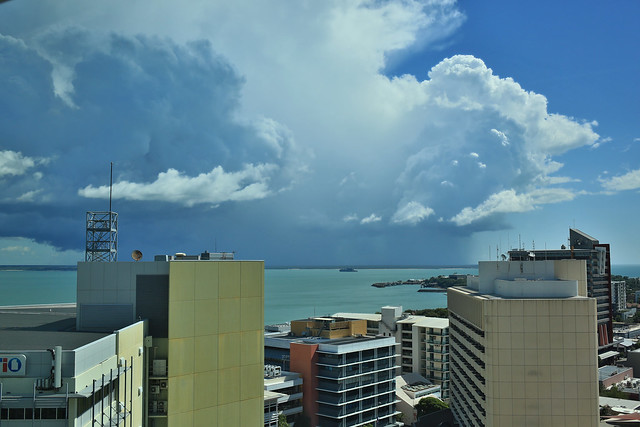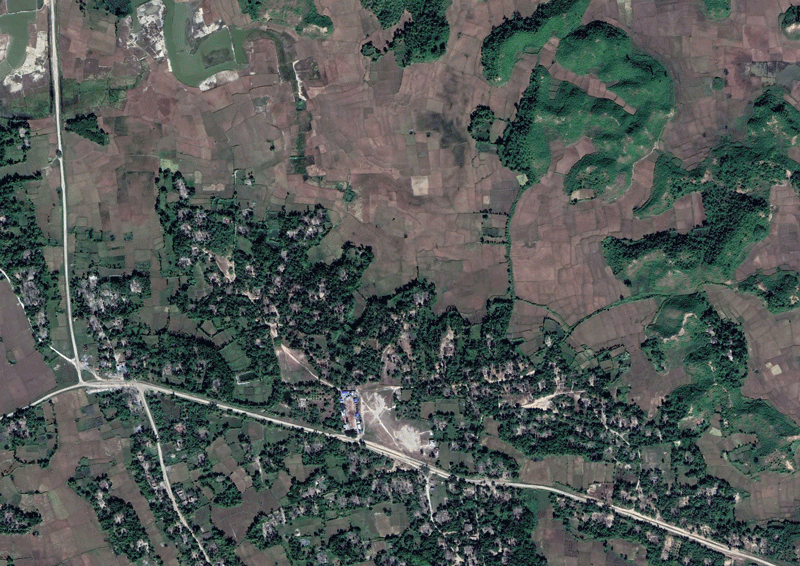The five-domains update

Sea state
BAE Systems has started construction on HMS Cardiff, the second of Britain’s Type 26 City-class frigates, which are set to replace the current anti-submarine warfare Type 23 frigates. The new class will ‘contribute to UK and allied security, but also make a strong economic contribution to the country’, says defence procurement minister Anne-Marie Trevelyan. The project milestone also provides a confidence boost for Australia’s own frigate program, which is using the Type 26 design as the baseline for the new Hunter-class warships.
According to a report by the US Naval Facilities Engineering Command, the earthquakes that hit Southern California in July caused more than US$5 billion in damage to the Naval Air Weapons Station in China Lake. The station supports research, development and testing of cutting-edge weapon systems, and getting it up and running again is now a major priority for the navy. It’s just one of several US military facilities that have been severely damaged in a series of recent natural disasters.
Australian shipbuilder Austal has signed a contract to construct two Cape-class patrol ships for Trinidad and Tobago. Metal cutting has already commenced under the $126 million contract, and delivery of the the vessels is expected in the second half of 2020. Austal has already built 10 Cape-class boats for the Royal Australian Navy and the Australian Border Force.
Flight path
Russia has conducted another round of surveillance missions over the US, this time photographing a number of military facilities in Hawaii. The mission was conducted as part of an agreement under the Treaty on Open Skies, which allows member countries to perform aerial surveillance activities over the airspace of other parties to the treaty. The US last undertook an Open Skies surveillance mission over Russia in February.
A Syrian Air Force Sukhoi SU-22 fighter jet has been shot down over the rebel-held province of Idlib, near the town of Khan Sheikhoun. Jihadist group Hayat Tahrir al-Sham, a former al-Qaeda affiliate, has claimed responsibility for the attack. Though the group didn’t say how it shot the aircraft down, news agencies assert that the warplane was targeted and hit by a ground-based anti-aircraft missile.
The Royal Air Force is about to receive its 160th and final Eurofighter Typhoon from BAE Systems, 16 years after the first aircraft was delivered. A series of upgrades will keep the Typhoons operational until their planned retirement in 2040. Under Project Centurion, new Meteor, Brimstone and Storm Shadow missiles will be integrated on the Typhoon fleet within the next four years. Further upgrades to the aircraft and EJ2000 engine will be conducted under the long-term evolution program.
Rapid fire
Ceremonies marking the 53rd anniversary of the Battle of Long Tan were held across the country on Sunday to remember the sacrifices made by Australians who served in the Vietnam War. Long Tan, which took place on 18 August 1966, was the most famous battle fought by Australian soldiers during the war. Against all odds and in torrential rain, 108 Australian and New Zealand soldiers fought off as many as 1,000 Viet Cong fighters. Australian casualties were 18 dead and 24 wounded.
Cubic Defence New Zealand has won a contract to train Australian soldiers for chemical, biological, radiological or nuclear (CBRN) defence missions. The company will deliver a ‘simulation-enabled collective training capability’ that is ‘capable of projecting synthetic CBRN effects over large numbers of soldiers’ in a live training environment. The technology is meant to give soldiers experience in the tactical and logistical effects of a CBRN attack.
In centuries past, the humble yak has helped China defend its strategic interests from invaders coming over the northern steppes. Nowadays, the People’s Liberation Army still uses yaks to patrol China’s far-west regions of Tibet and Xinjiang where modern transport and horses can’t venture. Yaks are well suited for traversing the high-altitude rocky escarpments and snow-capped mountains because of their adapted respiratory system and warm outer coats.
Final frontier
Satellite imagery showing increased activity at the Imam Khomeini Space Center in recent weeks suggests Iran is preparing to launch a satellite into orbit following two unsuccessful attempts at the start of the year. Amid allegations that the launch could contravene UN Security Council resolution 2231, Tehran has maintained that there’s no military component to its launches. It is expected that the launch will take place before the end of the year.
NASA’s Jet Propulsion Laboratory is teaming up with researchers from Caltech, MIT and KAIST (a South Korean science and technology university) to participate in DARPA’s Subterranean Challenge. The team sent six robots to the competition in Pittsburgh, Pennsylvania. They’ll be competing against 10 other teams, including one from Australia, led by CSIRO’s Data61 project. The competition has the potential to assist with developing space technology for exploration and prospecting, as the robots are required to map and locate hidden objects underground using artificial intelligence.
Virgin Galatic has announced that its new headquarters and customer centre at Spaceport America in New Mexico is ‘operationally ready’, with journalists offered the opportunity to tour the facility this week. Virgin’s mothership—VMS Eve—has already been moved into the new facility, but it remains unclear when commercial flights will start.
Wired watchtower
Twitter has identified a significant information operation involving hundreds of accounts linked to China. The information operation—directed at undermining the pro-democracy movement in Hong Kong—promoted paid advertisements and tweets that supported China’s version of events. The accounts have since been removed from Twitter. Facebook has also removed several pages, groups and accounts originating from China that it says were associated with ‘coordinated inauthentic behaviour’ centred on Hong Kong.
Researchers from Israeli cybersecurity firm vpnMentor revealed last week that a database containing the fingerprints of one million people, along with the corresponding metadata, was inadvertently made freely available to the public. The biometric data, used by the UK Metropolitan Police, as well as banks and defence contractors, was kept in a centralised database controlled by South Korean security company Suprema ‘as a means of identifying people attempting to gain access to buildings’. The vulnerability has since been addressed.
Government officials in Tonga are considering whether to ban Facebook amid escalating tensions online. Tonga is currently grappling with a ‘digital war’ following the government’s proposal of a new set of rules that would transfer certain powers of the king to the government. Monarchists and pro-government forces have mobilised ‘thousands of mostly anonymous Facebook accounts’ to direct abuse and threats against each other.










